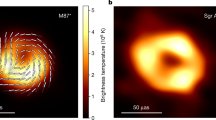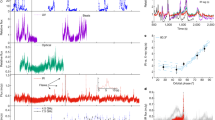Abstract
JACKSON and Ryan1 suggested that a black hole may have caused the Tunguska catastrophe in 1908, in which an explosion occurred in a remote part of Siberia. About 1023 erg (equivalent to 2 Mton of TNT) of energy was released. Several lines of evidence render the black hole hypothesis extremely unlikely.
This is a preview of subscription content, access via your institution
Access options
Subscribe to this journal
Receive 51 print issues and online access
$199.00 per year
only $3.90 per issue
Buy this article
- Purchase on Springer Link
- Instant access to full article PDF
Prices may be subject to local taxes which are calculated during checkout
Similar content being viewed by others
References
Jackson, A. A., and Ryan, M. P., Nature, 245, 88 (1973).
Krinov, E. L., in The Moon Meteorites and Comets (edit. by Middlehurst, B. M., and Kuiper, G. P.), (Univ. Chicago Press, Chicago, 1963).
Whipple, F. J. W., Q. Jl R. Met. Soc., 16, 287 (1930).
Astapovich, I. S., Soviet Astron., 10, 465 (1933).
Wick, G. L., and Isaacs, J. D., Nature, 247, 139 (1974).
Fessenkov, V. G., Meteoritika, 6, 8 (1949).
Author information
Authors and Affiliations
Rights and permissions
About this article
Cite this article
BEASLEY, W., TINSLEY, B. Tungus event was not caused by a black hole. Nature 250, 555–556 (1974). https://doi.org/10.1038/250555a0
Received:
Published:
Issue Date:
DOI: https://doi.org/10.1038/250555a0
Comments
By submitting a comment you agree to abide by our Terms and Community Guidelines. If you find something abusive or that does not comply with our terms or guidelines please flag it as inappropriate.



